Nokia 8 vs Galaxy S8: Which is better?
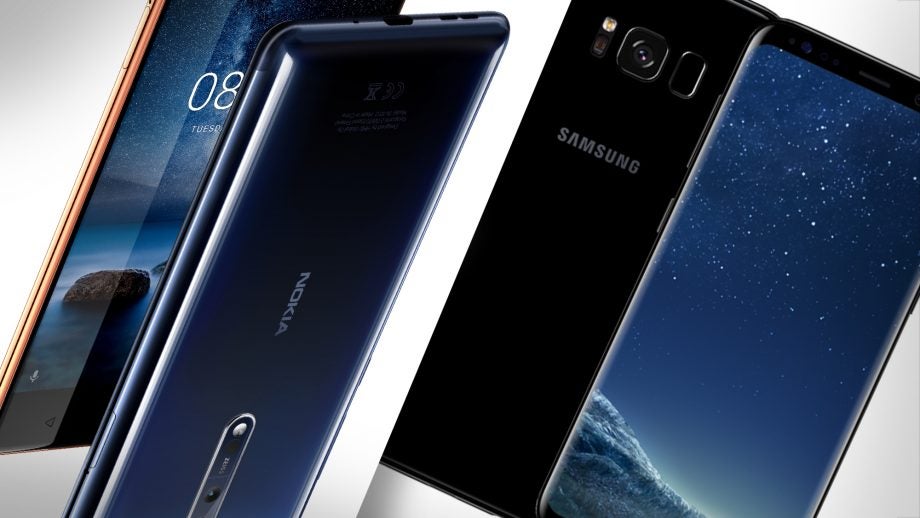
Nokia 8 vs Galaxy S8: Has Nokia done enough with its latest flagship to dethrone the current smartphone king, Samsung’s Galaxy S8? We take a look.
Nokia has unveiled its flagship for 2017 ,the Nokia 8, and it certainly looks to be a well-designed phone. But its European pricing puts it in the same league as Sammy’s smartphone triumph, the Galaxy S8, which has some of the best hardware available. Has Nokia done enough to knock the S8 off the top spot? Here’s all you need to know:
Nokia 8 vs Galaxy S8 – Design
The S8’s curved-edge design and almost bezel-less display made it the nicest-looking phone of 2017. In fact, the S8 might just be the finest phone we’ve ever seen. The glass, screen and metal combine to make what feels like a solid and complete piece, while the lightweight design makes the phone feel seriously sleek. At 155g, it’s lighter than the Nokia 8’s 160g, and Sammy has managed to keep the handy MicroSD card slot despite the thin chassis.
Related: Best smartphone
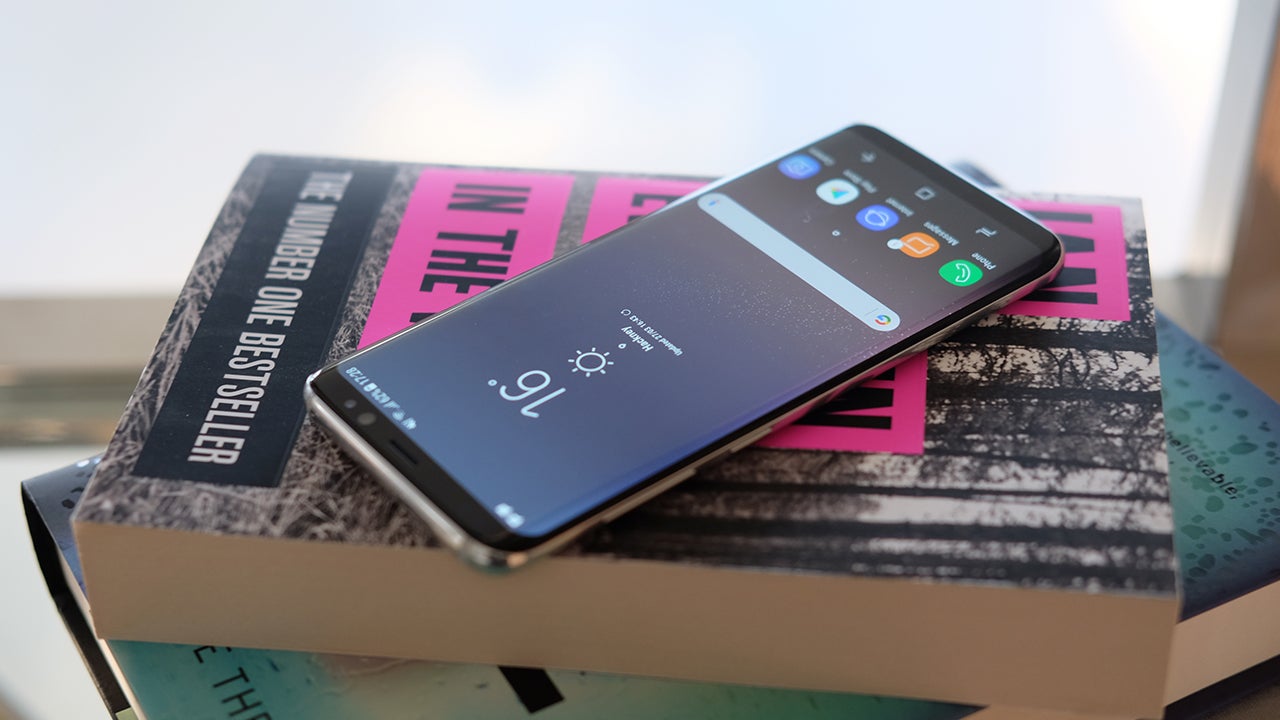
Overall, the curved edges, glass back, lack of a physical home button, and minimal bezel make the S8 look innovative as well as sleek. Nokia, or rather HMD Global which owns the rights to the Nokia brand, has chosen to keep a physical home button in place, which sits on a fairly beefy bezel on the bottom of the phone’s face. There’s also a hefty bezel at the top of the screen. The display itself does stretch to the sides of the phone, though, so the bezel is at least confined to the top and bottom of the handset.
Despite the bezel, the Nokia 8 comes in a unibody design which has apparently been “milled from a single block of 6000 series aluminium”. The 40-stage process of “machining, anodizing and polishing” has certainly resulted in what looks like a very classy smartphone, especially on the certain models that come with a high-gloss mirror finish, but Samsung’s innovative design simply can’t be beat for sheer looks.
The S8 is also IP68 water- and dust-resistant, so it will survive a dunk for 30 minutes in depths of up to 1.5 metres. Meanwhile the new Nokia 8 is only IP54 splash-proof, so don’t go dropping it in the sink.
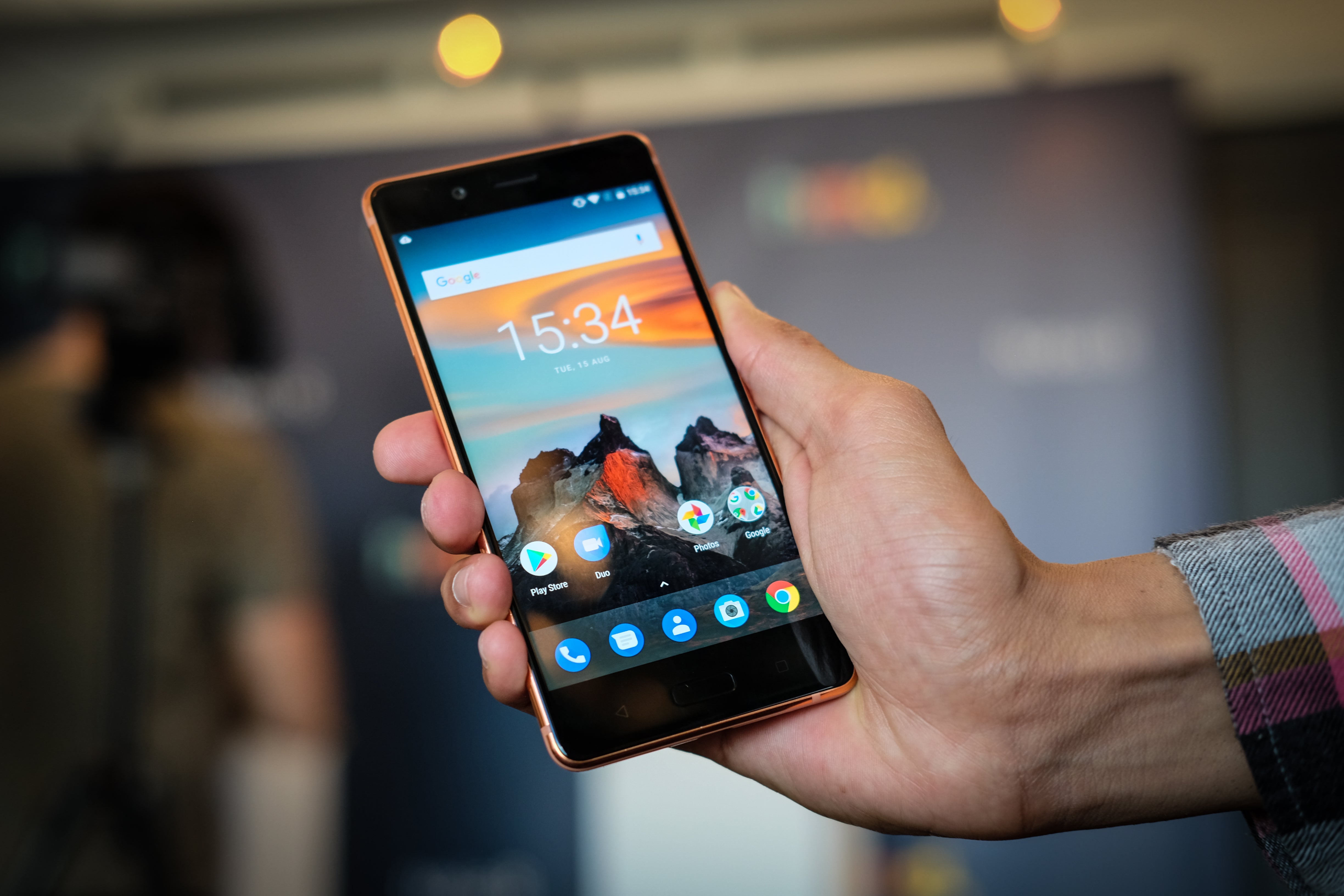
Charging on both phones is handled by a USB Type-C port, but Sammy has also include Qi Wireless tech so you can juice up the S8 by simply placing it on a compatible charging mat. Another plus for Samsung, then. But at least the Nokia 8’s fingerprint sensor remains on the front of the phone. Samsung was heavily criticised for moving its sensor to the rear of the phone and placing it right next to the camera lens.
Nokia 8 vs Galaxy S8 – Display
If you want the best screen available, then the Galaxy S8 wins on paper. Fancy curves aside, the phone comes with a new 18.5:9 aspect ratio, which means it’s taller, giving you more space without having to enlarge the body of the device too much. While the previous Galaxy S7 had a 5.1-inch display, the S8 bumps that to 5.8, and it’s a very capable panel at that.
Samsung has provided an AMOLED panel with the odd quad-HD+ 2960 x 1440 resolution and Mobile HDR capabilities. In short, that makes for an incredibly sharp and dynamic on-screen image that few, if any, smartphones can match. We found in our review that the screen was so bright, we could keep it on 25% brightness and it’s perfectly visible indoors. There’s also a handy ‘Video Enhancer’ mode, which boosts the contrast and brightness in certain apps – Netflix, Prime Video, YouTube etc – to create a pseudo-HDR effect.
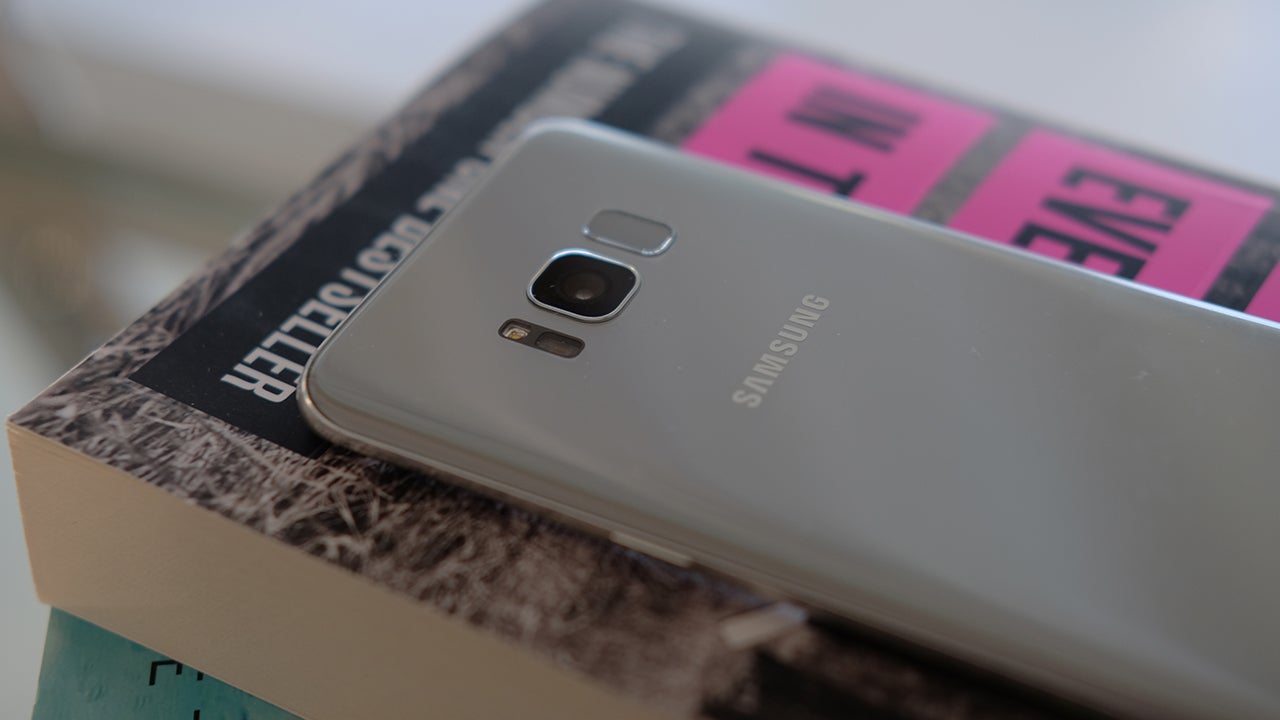
Nokia’s offering might not be quite up to the same standard but it looks to be pretty close. The 5.3-inch display isn’t AMOLED. Instead an IPS LCD panel has been used but it does boast an impressive QHD screen with a 2560 x 1440 resolution. The 700nit screen brightness isn’t quite up to the S8’s 1000+ nits but it’s more than the LG G6’s 650 nits, There’s also a Corning Gorilla Glass 5 covering to protect the thing against drops, and the 2.5D Glass should produce a nice curve on the edges of the glass, even if it isn’t quite as pronounced as on the S8.
Nokia 8 vs Galaxy S8 – Hardware
Things are a little more even in the hardware department. Samsung uses Qualcomm’s Snapdragon 835 processor over in the states, and that’s exactly what you’ll find in the Nokia 8. Its’ the top-end chip available right now, but the 836 isn’t far away, so that’s worth bearing in mind when considering any of these two devices. Outside of the states, Samsung uses its own Exynos 8895 chip, which is just as powerful as the Snapdragon 835.
The Nokia 8 and S8 also both sport 4GB of RAM and 64GB of internal storage, but you can expand that memory on both devices using a MicroSD card. All of which means you’ll get a smooth and speedy user experience on both these devices. We can’t say for sure whether there’s much difference between the two as we are yet to try out the Nokia 8 for a prolonged period, but we’ll update this piece once we have.
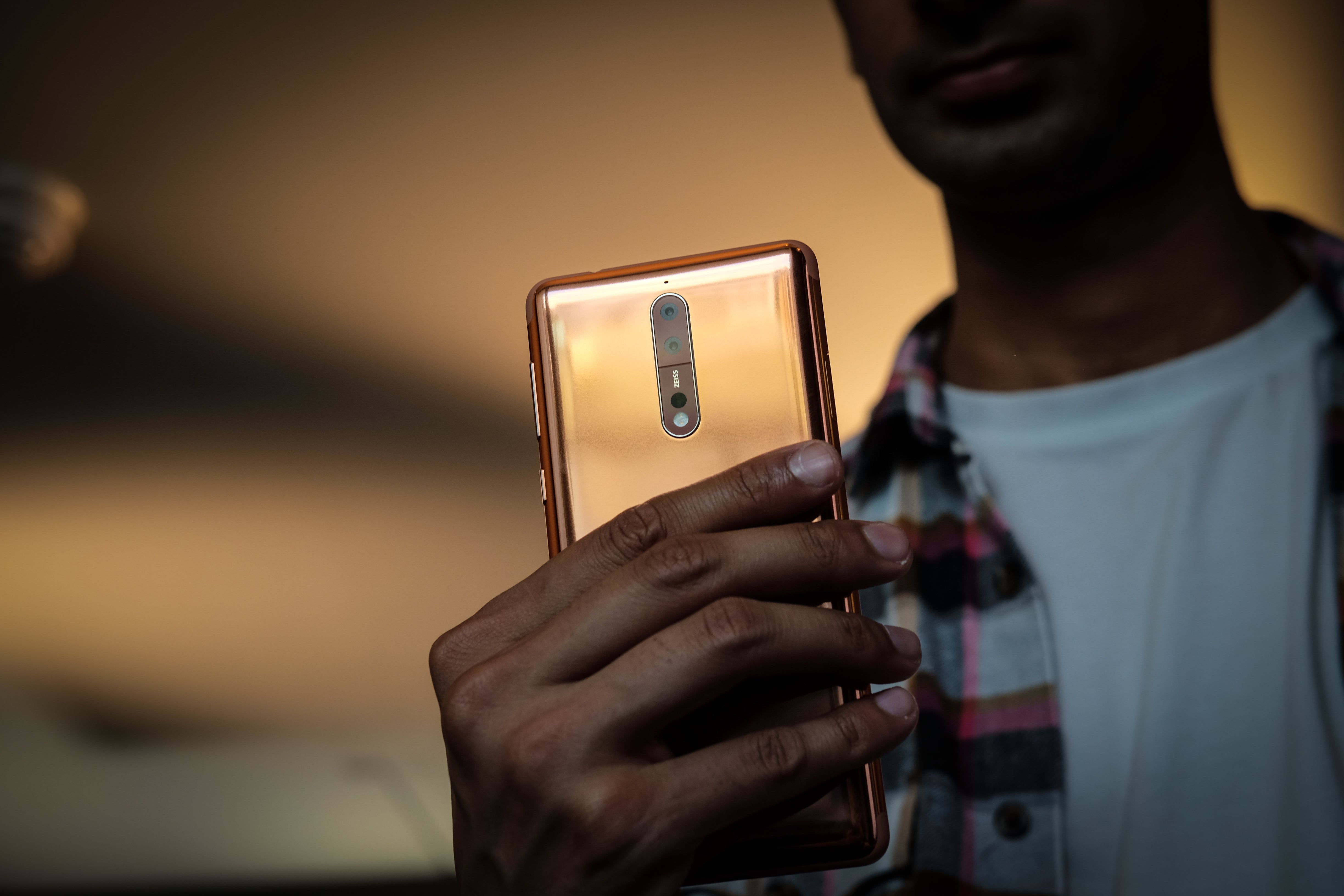
One element to note is that the Galaxy S8 comes with the Mali G71 CPU for the Exynos model and the Adreno 540 GPU for the Snapdragon version. That means games run incredibly well. We’re still confirming what Nokia is working with in this regard.
Elsewhere, you’ll find a non-removable 3000mAh battery on the S8, while the Nokia 8 comes with a 3090mAh cell. There likely won’t be much difference between the two phones when it comes to power consumption, especially since they both use the same processors. But we’ll have more once we’ve tried out the Nokia 8. As it stands, the S8 performed well, offering a day of use out the box, with the screen resolution bumped to quad-HD+ and the brightness at a very viewable 30%. That left us with about 10% battery life.
One area where the Nokia 8 will really have to deliver if it’s to outdo the S8 is the camera. Samsung’s offering is currently the best available, even though it doesn’t come with a dual sensor like many of the more recent smartphones. Despite that, the single 12-megapixel sensor with wide f/1.7 lens and Dual Pixel tech makes for some stunning shots. The camera is also very quick, taking snaps as soon as you hit the shutter button, and the Auto HDR mode is a really useful addition.
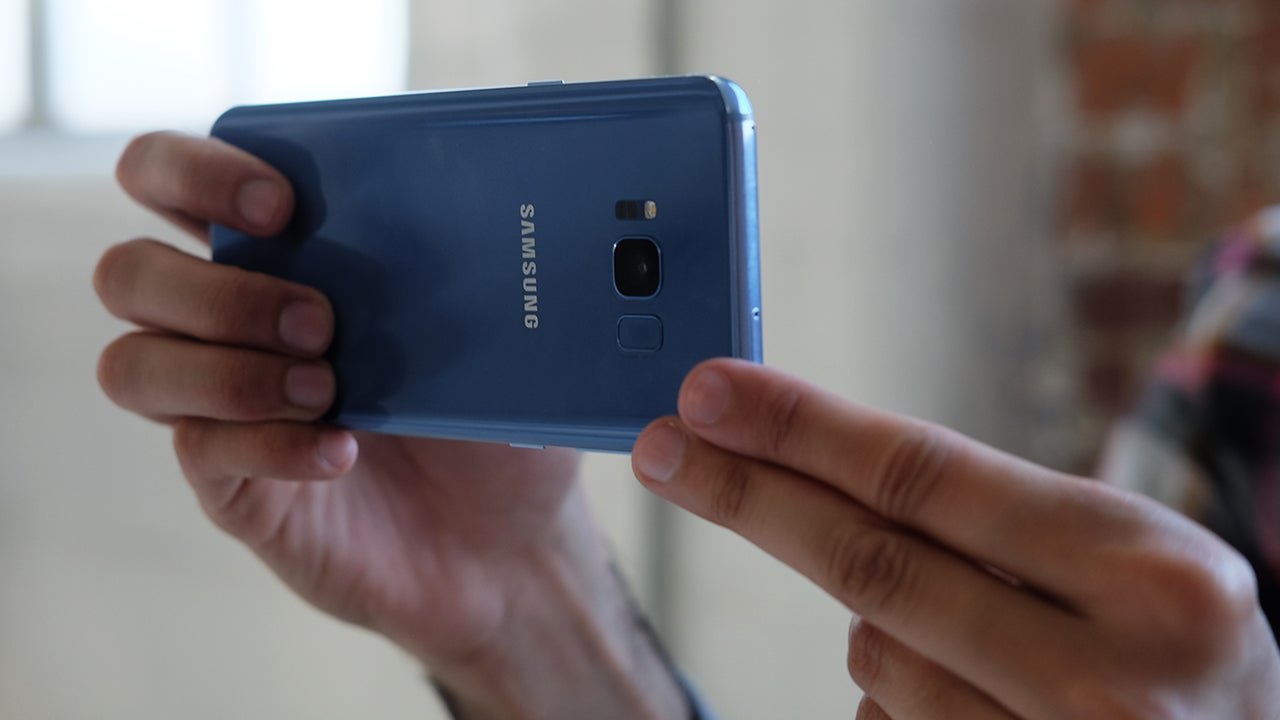
Can Nokia compete with that? Well, that remains to be seen, but on paper the 8’s camera looks decent enough. Both the front and rear cameras have been co-developed with Zeiss optics, with the latter offering a dual setup which makes use of a 13-megapixel sensor with OIS and another 13-megapixel sensor that shoots in monochrome. That’s the same setup as seen on phones from the likes of Huawei, and should make for some great shots with good depth of field. Other specs include an f/2.0 aperture, which isn’t quite as wide as the S8’s f/1.7, and a dual tone flash. Round the front, the 13-megapixel selfie shooter also boasts an f/2.0 aperture, which should be able to go toe-to-toe with the S8’s 8-megapixel offering.
HMD is making much of its Dual-Sight feature which uses the front and rear-facing cameras to live stream in split screen, or take pictures from both lenses at the same time. It’s an interesting addition but whether users will find it useful remains unclear at this point.
Elsewhere, the Nokia 8 looks to have an interesting audio feature. HMD says the Nokia OZO Audiobrings spatial 360° audio to your smartphone, offering what it claims is “a fully immersive audio experience” for your 4K video. We’re yet to truly test it out, but it’s an intriguing addition worth taking note of, especially since HMD says the binaural codecs enable high-fidelity playback even on devices without OZO Audio.
Nokia 8 vs Galaxy S8 – Software
Both Nokia and Samsung’s phones run on the Android platform, which means you’ll be getting Google’s mobile OS no matter which smartphone you opt for. The latest version is Android Nougat 7.1.1, which comes on the Nokia 8, while the S8 comes with the first version, 7.0. However, Samsung will be releasing an update for the phone, so you’ll be able to install Android Nougat 7.1.1 on the S8 very soon.
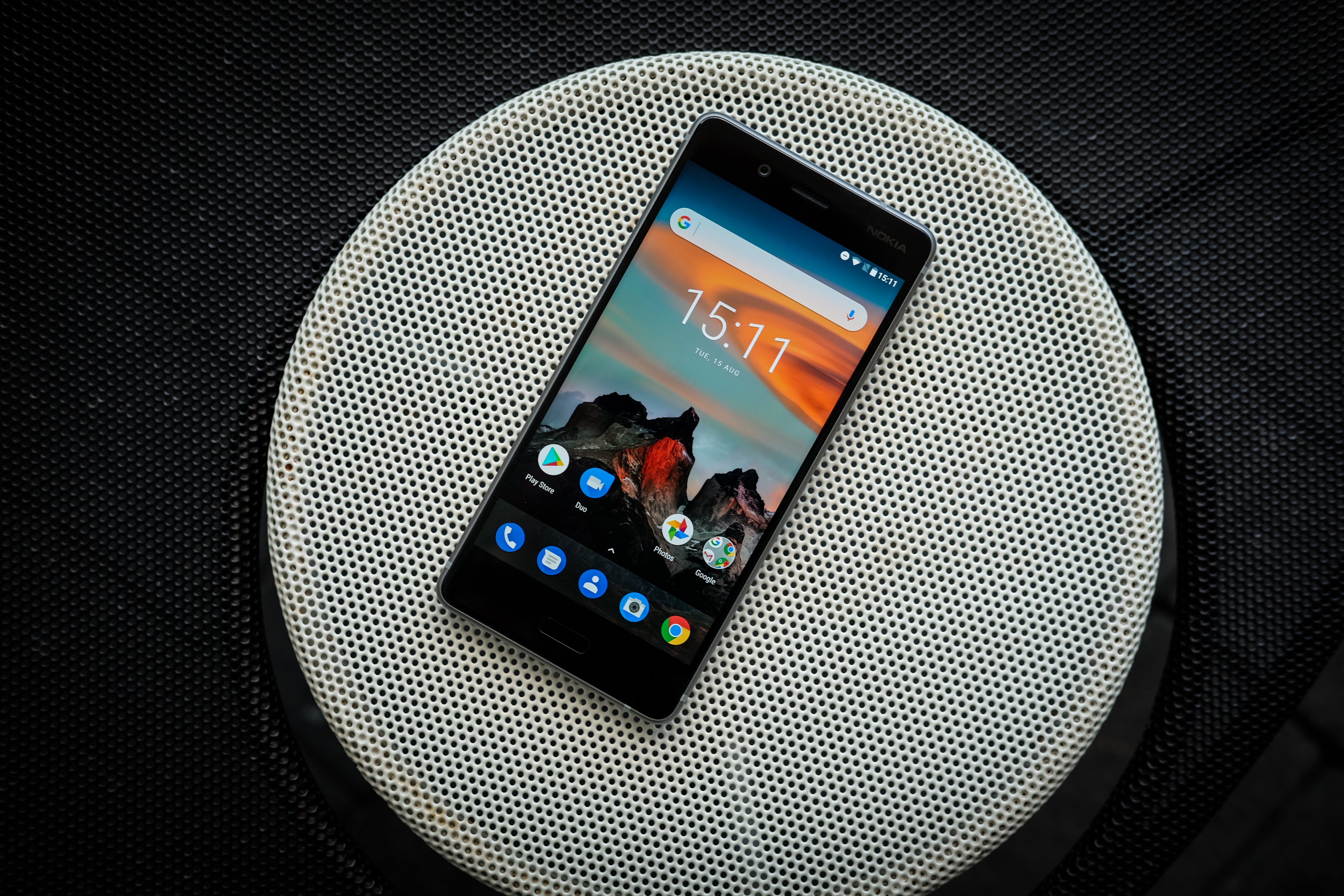
One big selling point for Nokia is its promise to offer a pure Android experience, with no unnecessary apps or add-ons. Un-skinned, untouched Android means you’ll be mercifully spared the bloatware that comes with other companies’ versions of the OS. So, it looks like we won’t be getting any duplicate apps or dodgy skins on this device.
Samsung, on the other hand, does skin its version of Android but that’s not necessarily a bad thing in the case of the S8. Although previous Galaxy handsets have offered some pretty disappointing takes on the Android OS, we found the S8’s software layer to be good-looking and functional, with more mature icons than the childish versions seen on older Samsung phones. The virtual home button even offers haptic feedback when pressed, and can be accessed even when the display is off.
What’s more, Samsung has added its own virtual assistant ‘Bixby’, so you’ll be able to take advantage of the feature’s AI capabilities.
Nokia 8 vs Galaxy S8 – Price and release
The Galaxy S8 has been out for a couple of months now, and can be picked up for £689 while the Plus model will run you £779. Check out our Best Galaxy S8 deals page for the latest offers on Sammy’s handset.
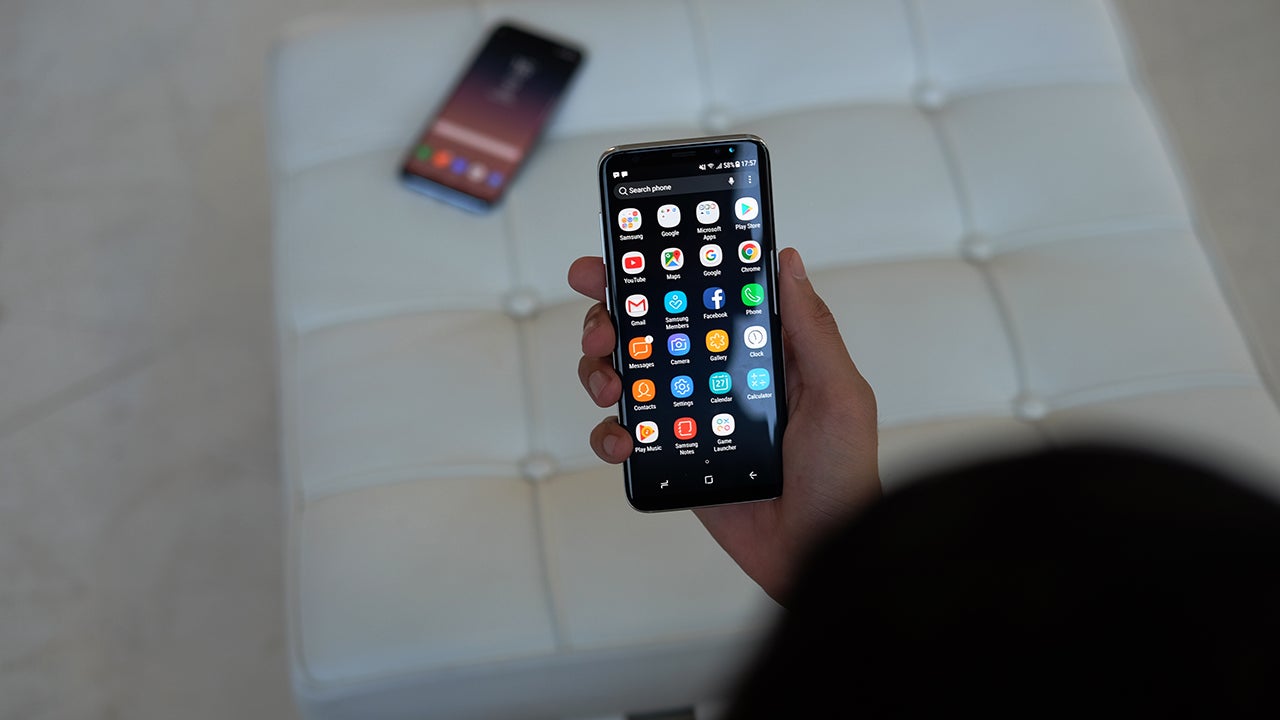
If you’d rather hold out for the Nokia 8, HMD is releasing the phone in four colours – Polished Blue, Polished Copper, Tempered Blue, and Steel – throughout September. We’re still awaiting a concrete release date for now, but stay tuned. The Nokia 8 will cost €599, which works out to about £544.
Nokia 8 vs Galaxy S8 – Summary
Put simply, Samsung doesn’t look like it needs to worry too much about the Nokia 8. There’s no doubt HMD’s handset offers some great hardware, but design-wise the S8 seems like it’s at least a year ahead. It also offers just as good hardware and generally feels like a premium phone. The Nokia 8 certainly looks to be a great offering but it doesn’t quite seem to edge the S8 out on paper. We’ll have more once we’ve reviewed the Nokia 8 in full, so don’t count it out yet.
Let us know which phone you like the look of on social media.

